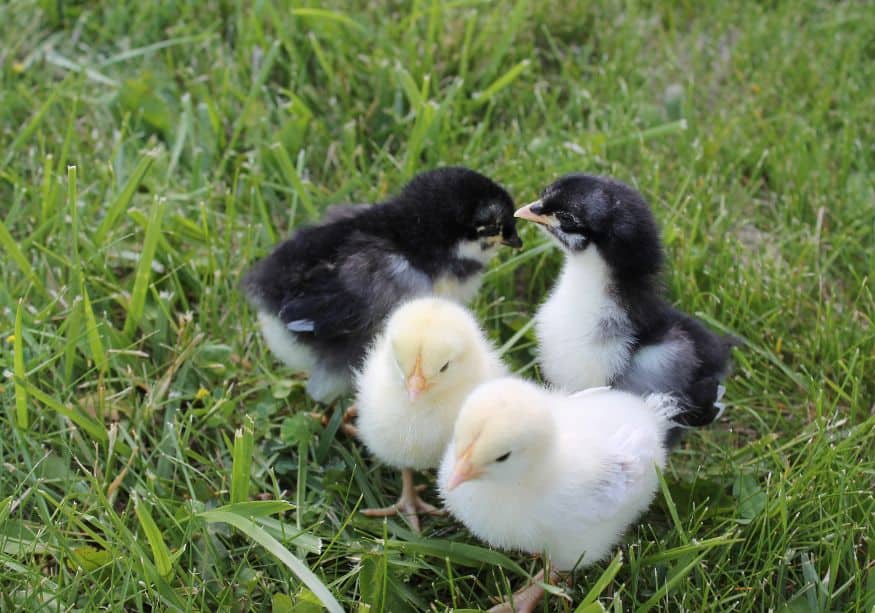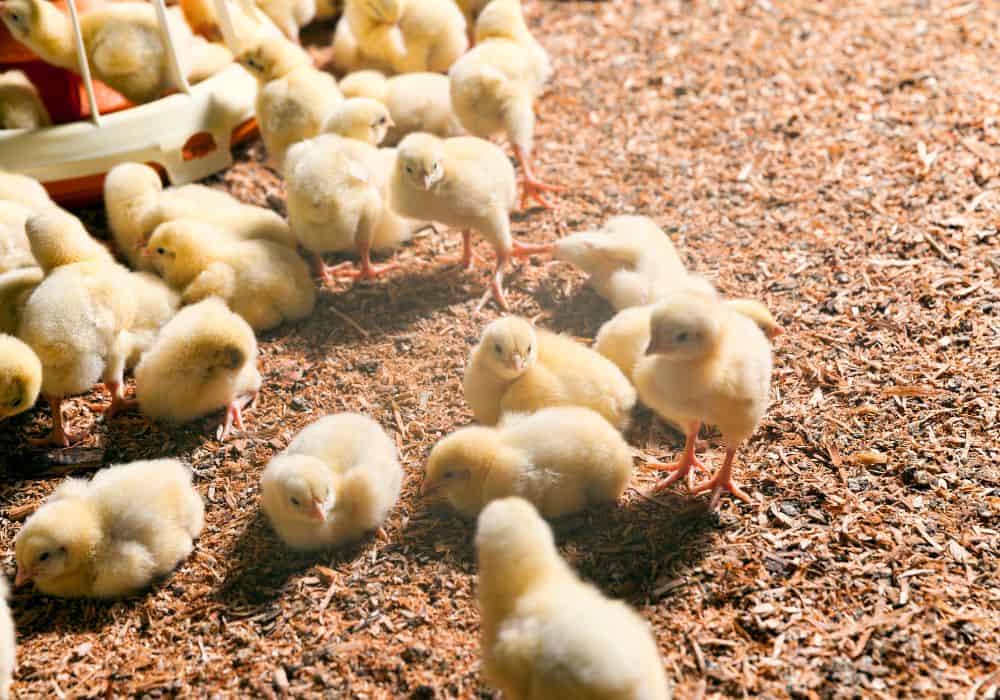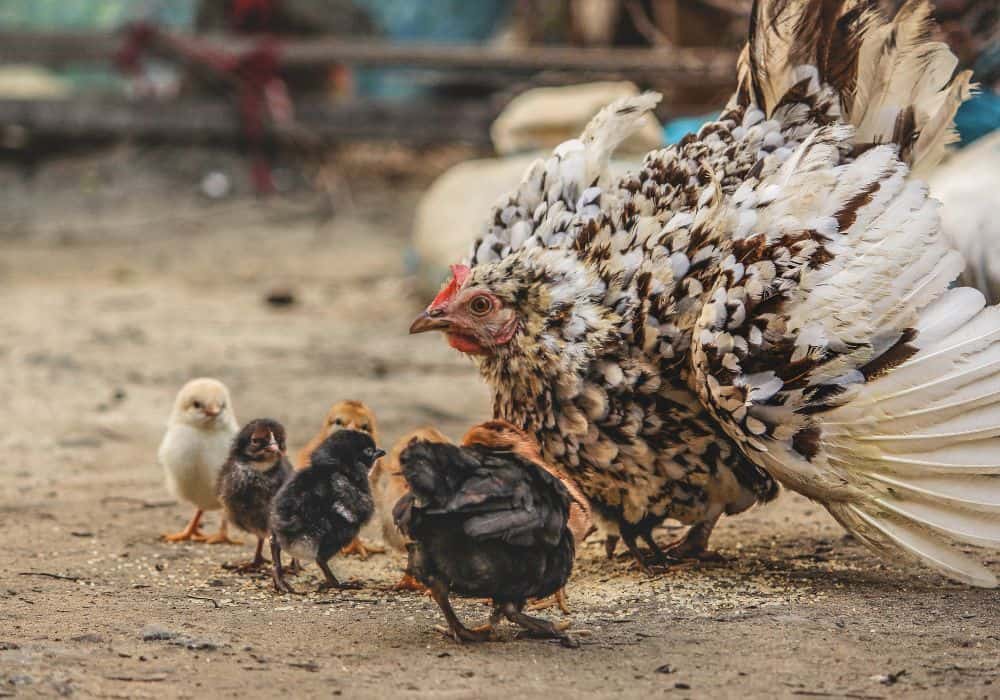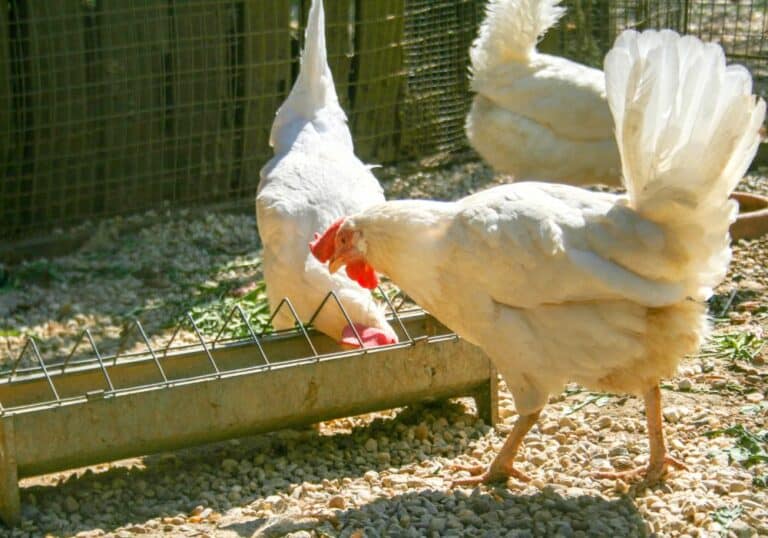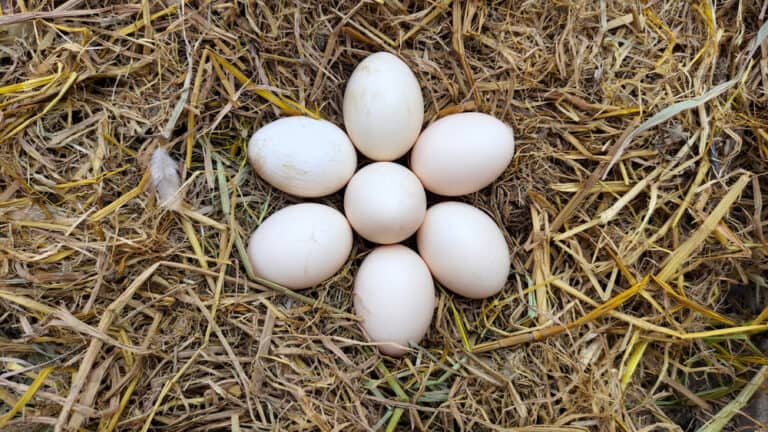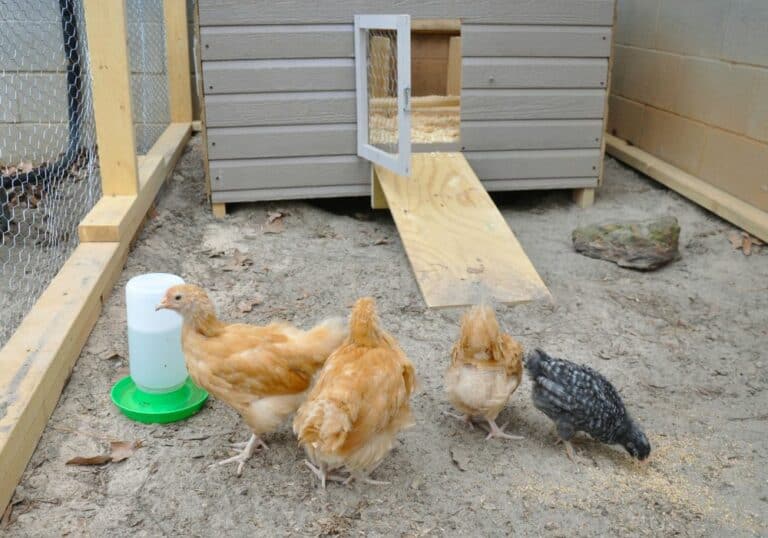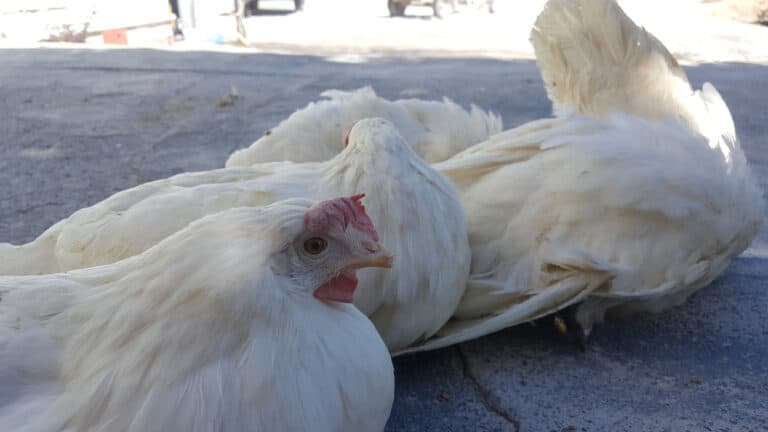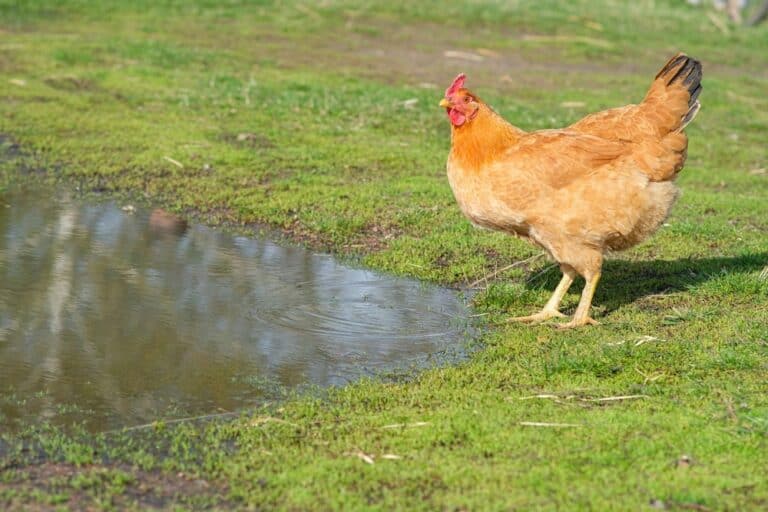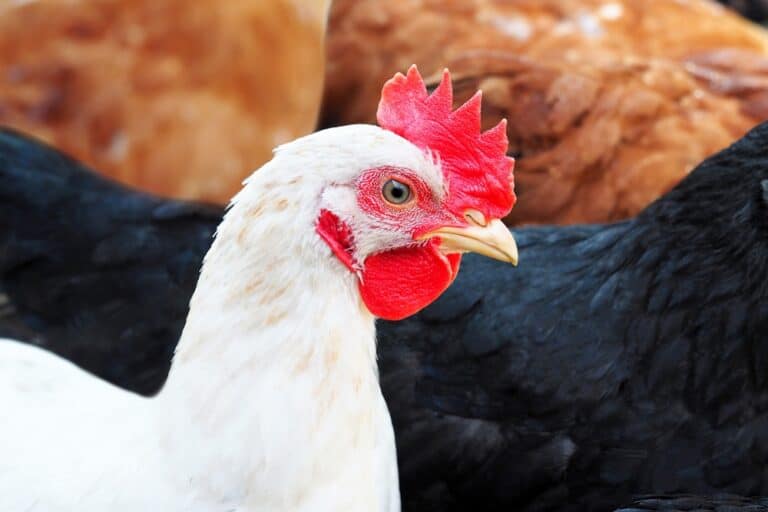A baby chick can grow impressively fast once it hatches out of its egg but even those fast-growing birds need some time to get ready for everything the world can throw their way. This is adorable to witness in real time but it also presents a tricky dilemma for the chicken keeper – when can chicks go outside and under what conditions?
When can chicks go outside?
At first glance, you may think that baby chicks should be able to traverse the outside world immediately after hatching. After all, in the wild, the mother hen doesn’t keep her chicks in a chicken coop – she lays and hatches her eggs outside.
And, indeed, if you have hens to brood and hatch their own eggs and to look after their own chicks – and if the outside temperatures are warm – you can be much more liberal with when and how you let the chicks traverse the outside world.
If you are using a brooder, however, things can get more difficult for a few reasons:
- While the brooder temperature under the heat lamp can be kept 100% stable, once the chicks go outside, they won’t have a mother hen to run back to when they get cold.
- When we’re using chicken brooders, we have the freedom to hatch chicks at any time of the month – it doesn’t matter if it’s the coldest month of winter, the chicks are under a heat source in the brooder in the garage. This can make it impossible to release the chicks outside for quite a few months, however, as they need the outside weather to be warm.
- A chick that’s just a few weeks of age can easily be the target of bullying from older chickens if it doesn’t have a mother hen to watch over it full-time. This often means that you need to wait a bit extra before you introduce the young chicks to the flock.
So, what do these three complications mean and when can chicks go outside?
The rule of thumb is that chicks that have been hatched and raised with a brooder shouldn’t go outside until they are at least 4 weeks of age and only if the weather outside is warm enough. If the weather is cold, you may want to wait a bit longer, especially if the chicks aren’t from a cold-resistant breed. Below we’ve listed 10 key considerations to keep in mind before you release your chicks outdoors.
What are the necessary conditions for baby chicks to safely survive outside?
Every chick is different as are the circumstances of chicken coop and yard. So, we can’t just tell you to wait until the 4th week and release the chicks outdoors no matter what. Instead, there are quite a few considerations to keep in mind:
1. Make sure they have enough feathering for the weather outdoors
If your chicks are past the 4-week mark but you’re dealing with cold weather outside, it can be tricky to figure out when the right time to let them outside is. What’s more chicks’ ages aren’t the only factor here as different chicken breeds handle cold weather differently.
For example, adult chickens from cold-resistant breeds can tolerate temperatures of 32O F (or 0O C) but warm-loving breeds can’t tolerate that even as adults. Add the fact that your chicks are more vulnerable and things get complicated.
One common advice is to wait until there are feathers on the chicks body. Wing feathers shouldn’t be confused with body feathers, however – the latter comes first while the body is still covered with down (which isn’t weather-resistant). Body feathers usually grow after about 10-12 weeks.
2. The chicks need to be safe from predators
Young birds are even more vulnerable to pests and predators than adults. Anything from hawks, coyotes, and foxes to cats and dogs can be a problem. So, whenever you decide to let your chicks outside, it’s important that you do so in safe surroundings, including proper fencing and a net on top.
3. You need a way to contain the chicks even if they can’t fly yet
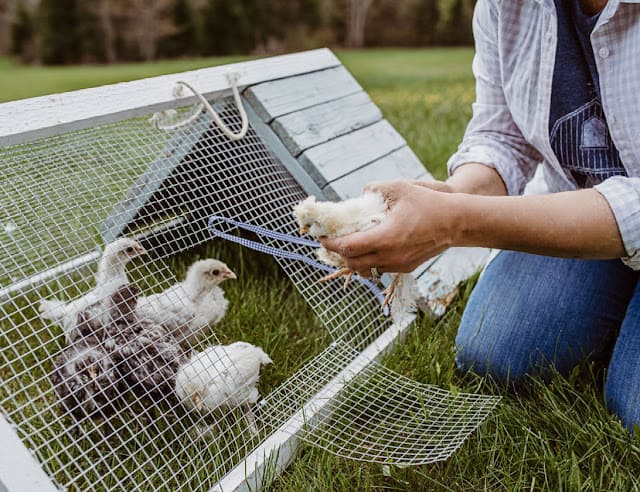
Adding a net on top of the young chicks’ area is important not only to keep predators out but also to keep the chicks in. Depending on their breed, young chicks can start trying to fly as early as the 7th or 8th day, especially if their brooder was tall enough to incentivize them to attempt it.
So, if you let your chicks in the yard without proper cover, you can expect some to try and get away almost immediately.
4. What surface are you going to let your young chicks walk on?
Something like a freshly cut lawn can be great for baby chicks outside but simple dirt can be fine too, as long as it’s pest-free. Just beware of long grass as impacted crops can be a problem even for adult chickens.
5. Water should be easily available at all times
Similarly, when you let your chickens explore the outside world for the first time, you should always ensure that they have ample access to clean water at all times. This usually means placing more than one or more shallow bowls of water here and there so the chicks can drink even if they get a bit lost in the chicken run.
6. Started with limited walks only
The transition from the brooder to the chicken run doesn’t need to be sudden – a couple of hours outdoors is alright at first, just so the chicks can stretch their legs and explore the new space. Of course, make sure that you do this in the daytime too as nighttime temperatures are much lower and less predictable.
7. The chicks will need a safe space too
Even if the weather outside is permissive enough for baby chicks, you should still prepare an extra safe space for the chicks to retreat to whenever they feel like it. That place should have some supplemental heat source that offers enough warmth just in case.
Whether that space comes in the form of enclosed playpens connected to the chicken run, a simple cardboard box, a pet carrier, or the brooder the chickens were just released from, it doesn’t matter – as long as it’s protective, warmer, and easily available.
8. Be there to observe the chicks at first
You should be near-constantly present during the first week of your baby chickens exploring their chicken run. This is important so you can notice any strange or worrying behaviors or symptoms. This can include anything from shivering and huddling together in the cold or panting in the heat, as seen here.
9. Not all chicken breeds are created equal
Always remember what type of breed you’re working with as some chicken breeds have extra-low tolerance to cold weather. So, even if someone has told you that a certain temperature is good enough for chickens, if you’re dealing with a warm-loving breed, you should absolutely wait a bit longer before letting them go outside.
10. Don’t mingle the new chicks with the rest of the flock right away
When introducing new chickens into their new permanent home with an existing flock, you should always be mindful of the pecking order that exists there. If you don’t want your young chicks to get bullied and hurt by the older chickens, you should introduce the two groups to each other very carefully.
How to introduce young chicks to the flock?
Introducing new young chicks to adult chickens is much like introducing two cats together – it should be done slowly and carefully. To avoid bullying, it’s best to first introduce the new chicks to other chickens of a similar size. The introduction should happen in a wide space that isn’t overcrowded so that the birds have enough space to move around comfortably.
The first meeting shouldn’t be too long either so the chicks don’t get overstressed. After that, you can introduce the chicks to other members of the flock in a similar manner.
It’s also helpful to house the chicks in a separate run that has contact with the flock’s standard chicken run – that way, the new chicks and the flock can further familiarize themselves with each other through the separation between the two runs.
Once all the chickens start looking comfortable with each other’s presence, you can put them all in the same place.
In conclusion
Raising baby chicks is a fun and rewarding experience but it also has its tricky and often risky moments. Letting your chicks explore the outside world for the first time is one of those moments and it needs to be handled with care and foresight.
Miscalculating the exact moment of letting your chicks out can be a problem but there is always a bit of wiggle room too. That’s why it’s important to keep your chicks under observation at first too, so that you can react fast enough if something isn’t quite right. And, of course, don’t forget the golden rule of thumb – if you’re not 100% sure that the time is right, you should probably wait a day or two more.

